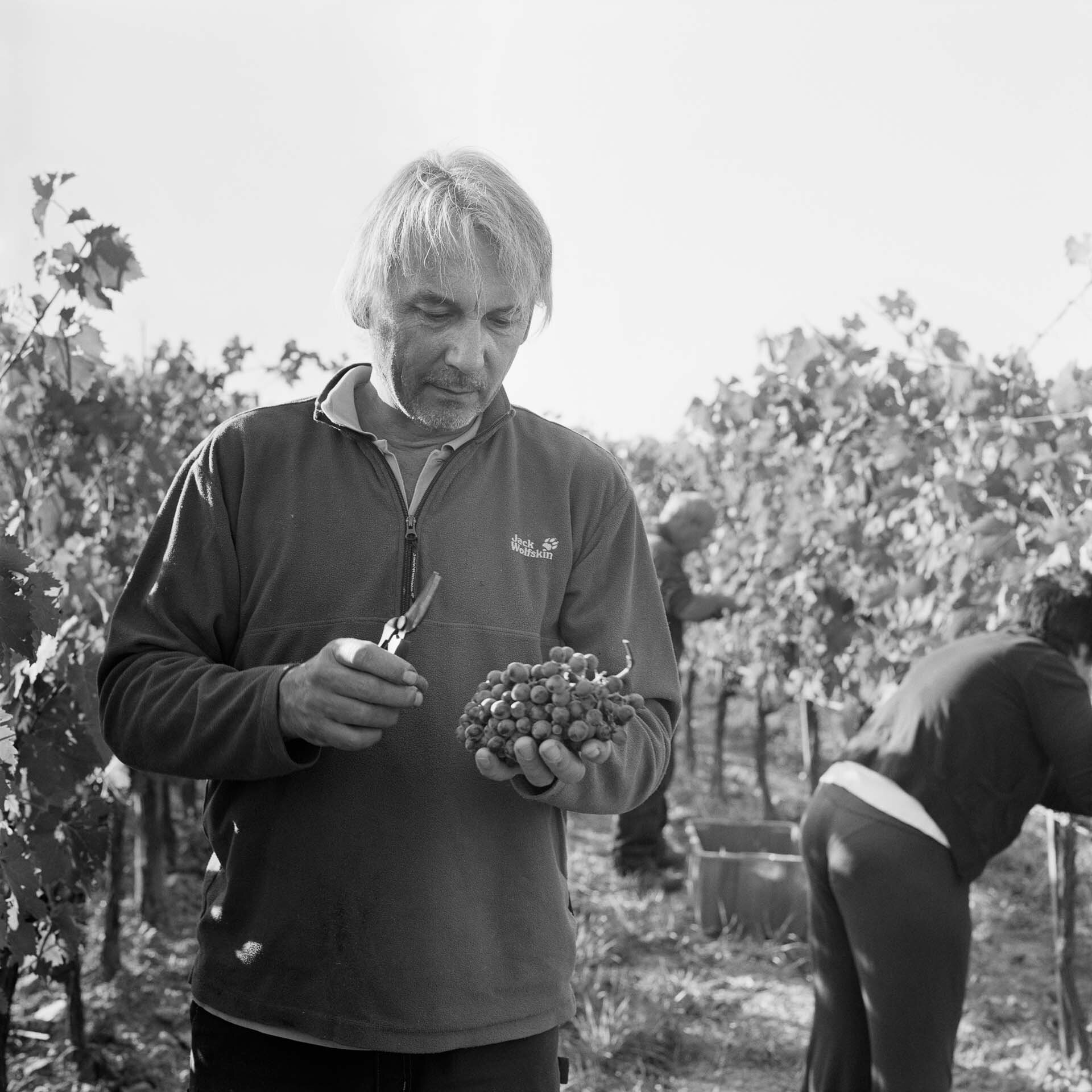
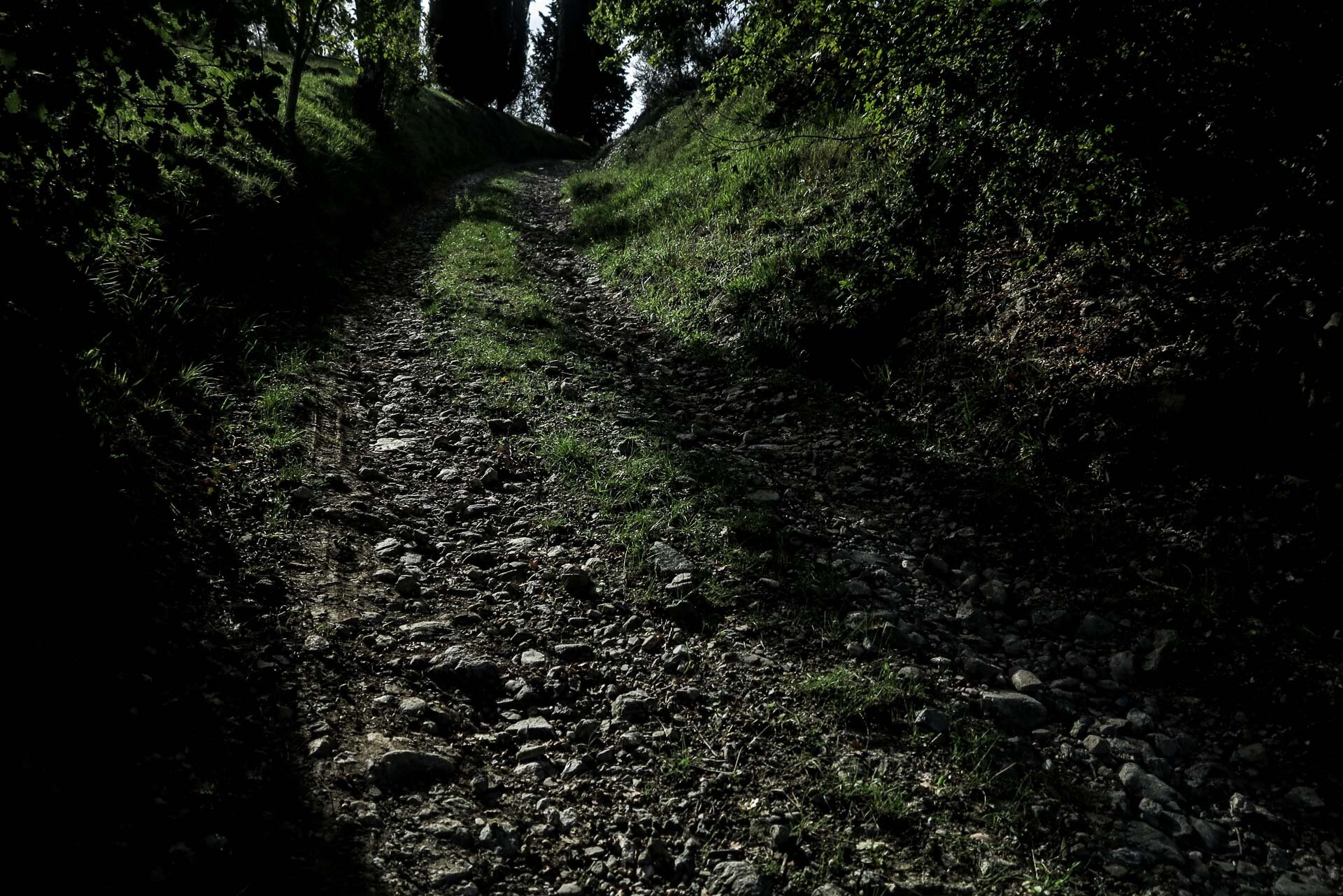

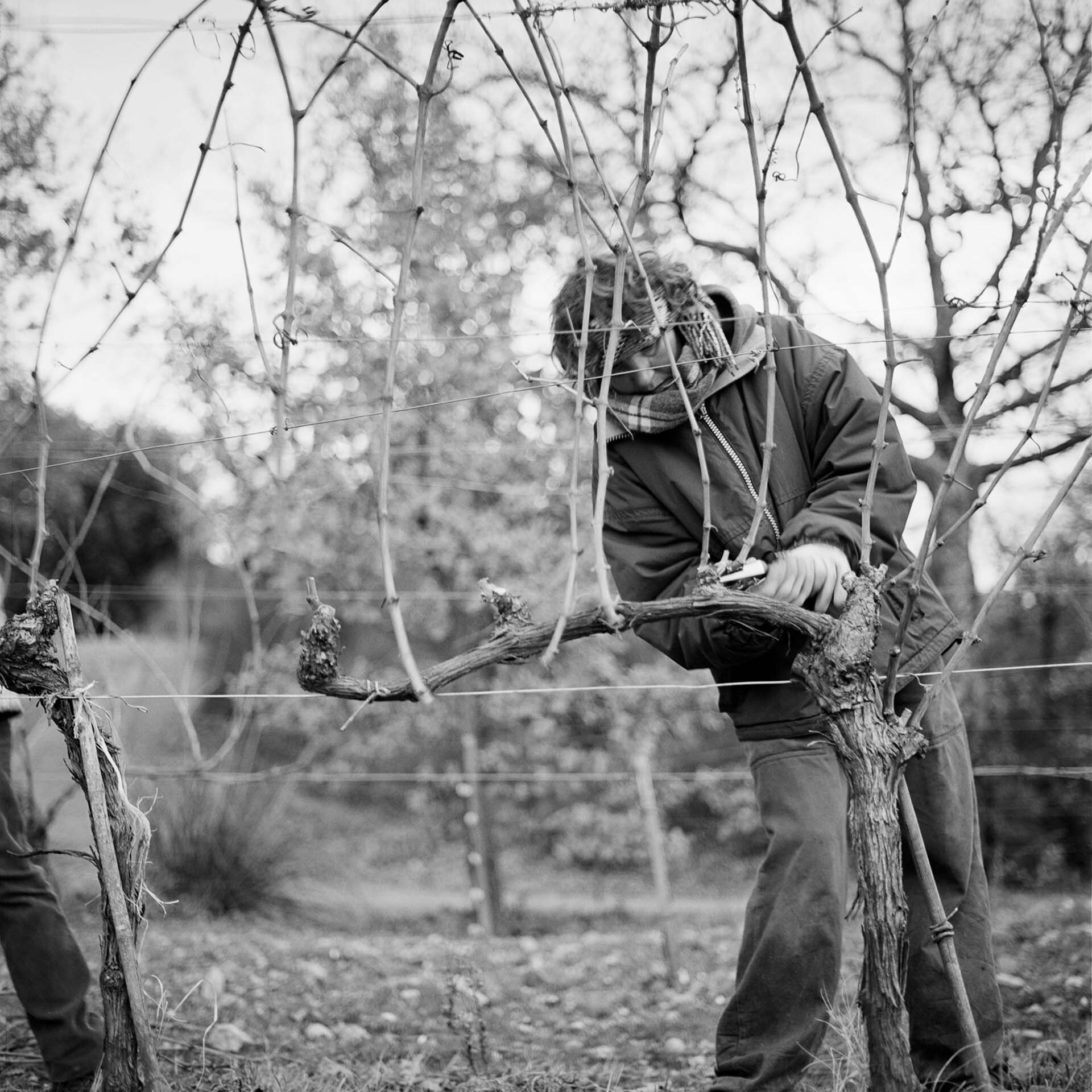
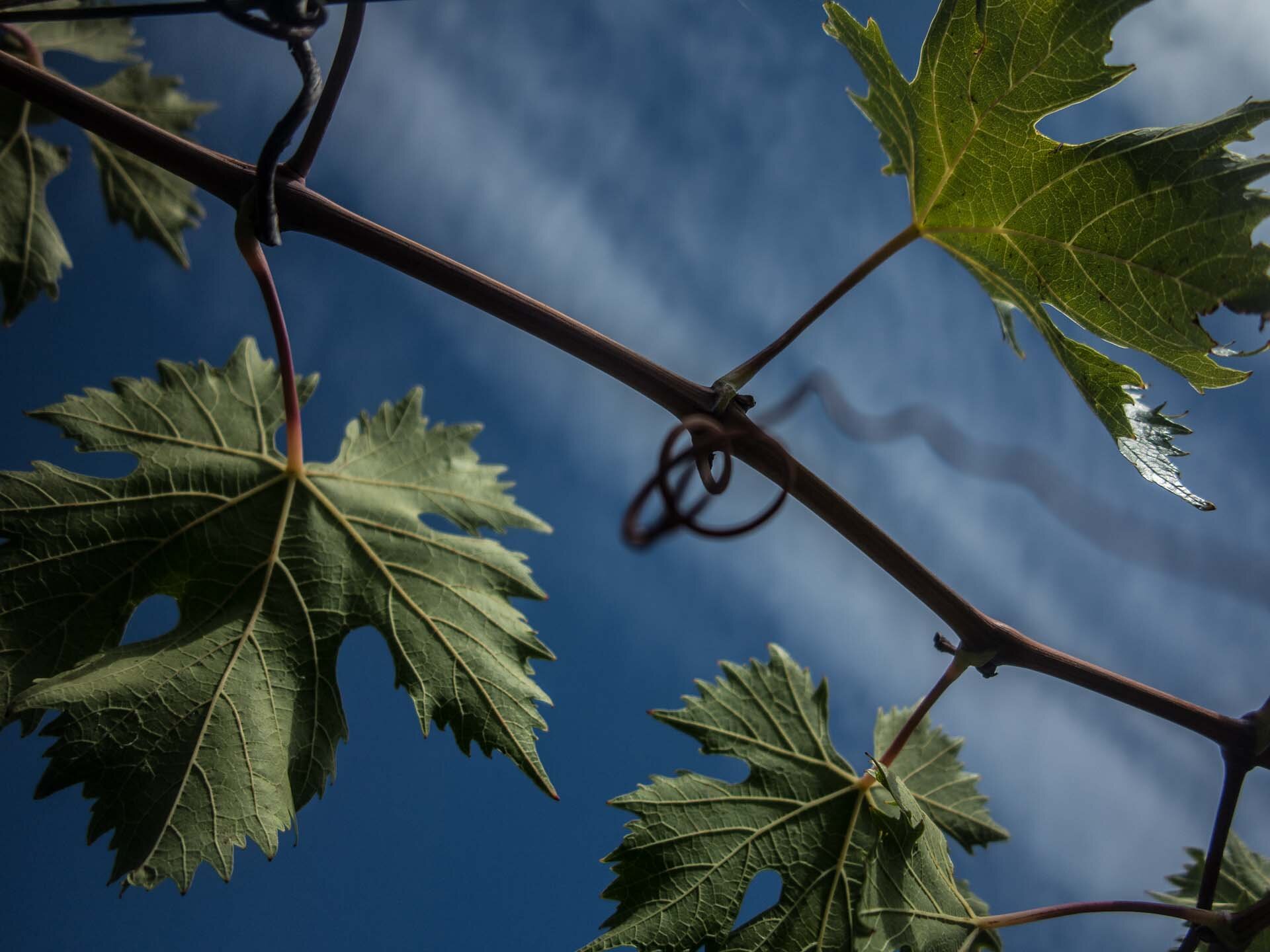
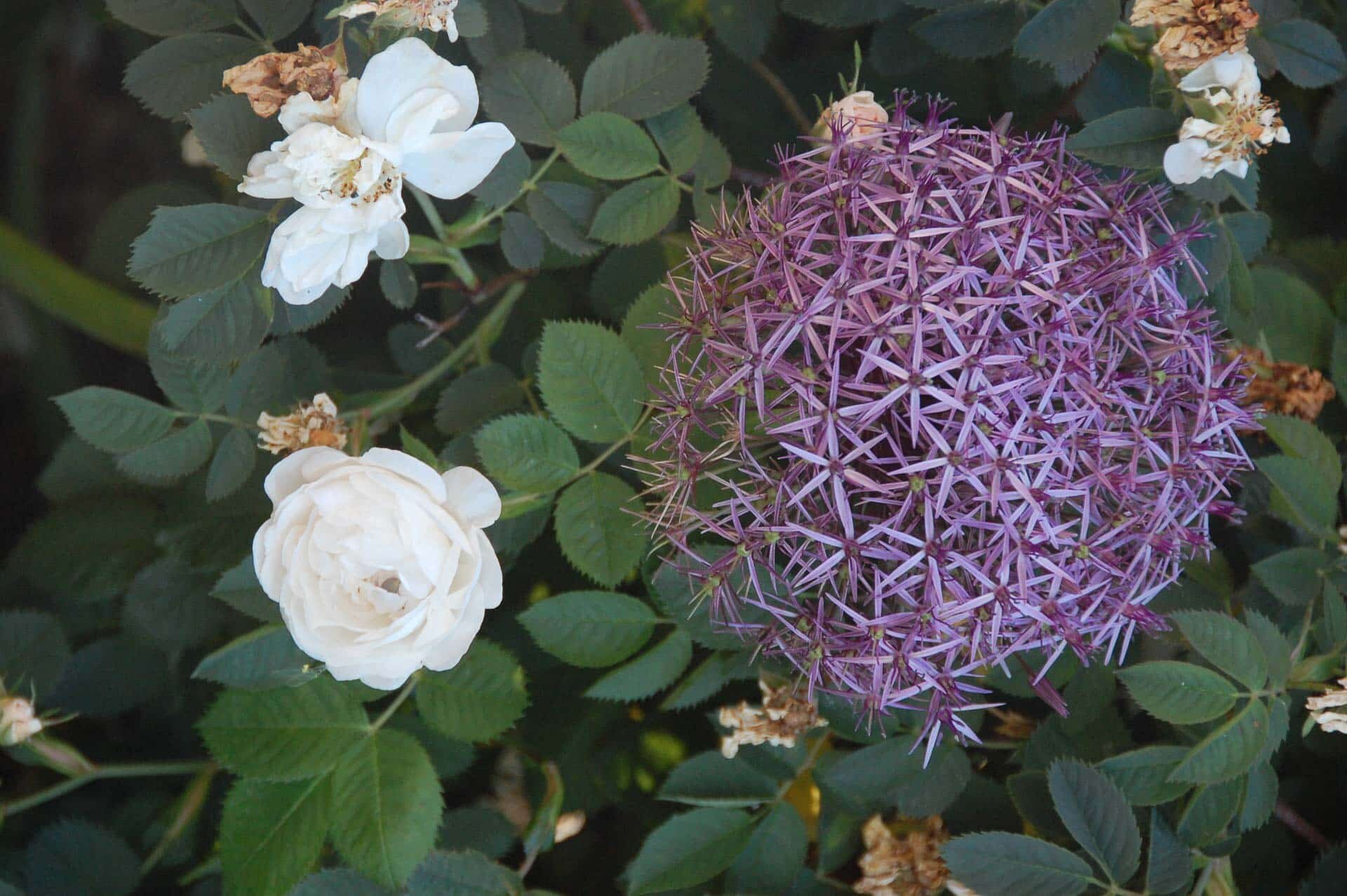
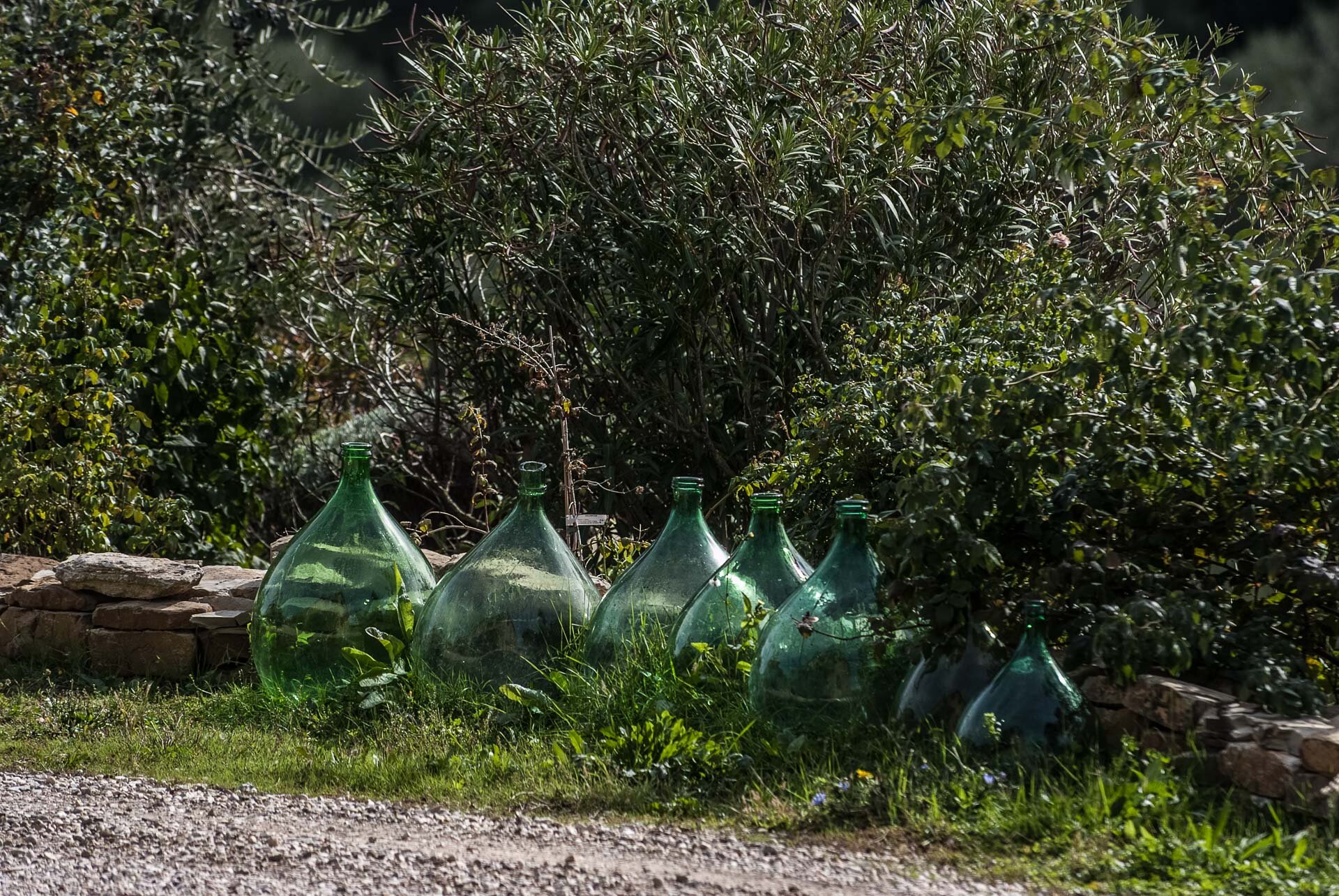
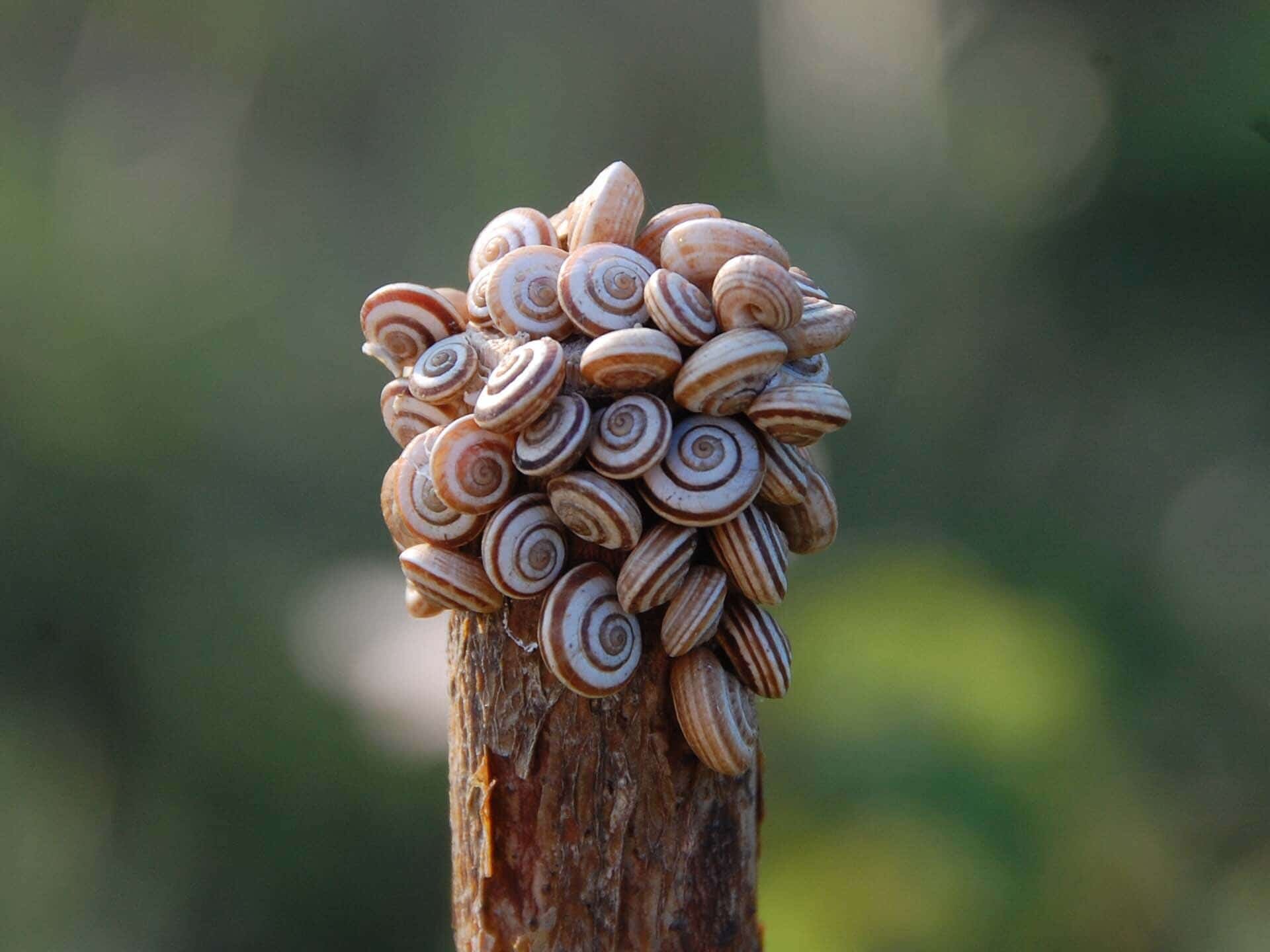
Pian dell’Orino
Who: Caroline Pobitzer and Jan Hendrik Erbach
Where: Montalcino (Tuscany, Italy)
What grapes: Sangiovese is the only cultivated grape variety, using 22 clones.
How many bottles: Depending on the vintage, they bottle between two and five wines, for a total of 17,000 bottles.
Key facts: Pian dell’Orino stretches on 11.5 ha, 5.8 ha of which are covered by the vineyard, 1.5 ha by olive trees, 0.5 ha by the garden, and over 3.5 ha by forest.
Website: https://www.piandellorino.com/en/
Pian dell’Orino “Vigneti del Versante” Brunello di Montalcino DOCG 750ML, 1.5L, 3L
Viticulture: Biodynamic
Soil type: In 2016 the Brunello di Montalcino Vigneti del Versante was produced of grapes sourced from the vineyards Cancello Rosso and Pian Bassolino (lower part with south exposition). It therefore expresses the diversity of our soils. Calcareous clay, easy weathering marl and sandstone (Alberese) together with flysch soils are the characteristic sedimentary soils in these vineyards. Their origins differ and date back to the geologic era of the Cretaceous – Tertiary boundary. The vines situated to the south-east are exposed to soils very often containing volcanic elements resulting from the eruptions of the nearby Monte Amiata. The increased amount of sand in the texture of the topsoil results in more spicy and nutty aromas in the berries, particularly in the vineyard Cancello rosso.
Elevation: The grapes for this wine come from vineyard Cancello Rosso and from the lower part of Pian Bassolino, these vineyards are situated at 350 m above sea level; the average age of these vines was 18 years at that time.
Grapes: Sangiovese (different clones)
Method of fermentation: All harvested grapes for the Brunello di Montalcino were carefully hand-selected on the triage table. Only healthy and ripe berries end in the vinification vat. Spontaneous fermentation started in one day, reaching a maximum temperature of 32°C, and taking 21 days until completion. The young wine then macerated for other 20 days on the skins. After racking, the young wine was aged for 48 months in two 25 hl oak barrels and in one 12,5 hl oak barrel. The malolactic fermentation set in immediately following the alcoholic fermentation still in the fermentation vat. As always no artificial yeast or other enzymatic or technological additives were used during the whole winemaking process.
Bottles made: On November 17th 2020 we bottled 7142 bottles of 750ml, 381 magnum bottles of 1,5L and 33 double magnums of 3L.
Pian dell’Orino “Bassolino di Sopra” Brunello di Montalcino DOCG 750ML, 1.5L, 3L
Viticulture: Biodynamic
Soil type: The grapes for Brunello Bassolino di Sopra sourced as always from the vineyard with the same name. It therefore is expression of the Terroir of the geological formation called Santa Fiora, which is predominant on the south-eastern slope of Montalcino.
Schisty siltites with inclusions of calcarenites characterize this formation. Also calcareous clay, easy weathering marl and flysch soils are common sedimentary soils in this vineyard. Their origins differ and date back to the geologic era of the Cretaceous – Tertiary boundary. The vines situated to the south-east are exposed to soils very often containing volcanic elements resulting from the eruptions of the nearby Monte Amiata.
Elevation: The grapes for this wine come from vineyard Pian Bassolino situated at 330-390 m above sea level; the average age of these vines was 17 years at that time.
Grapes: Sangiovese (different clones)
Method of fermentation: The grapes for Brunello di Montalcino Bassolino di Sopra 2015 were as always already carefully selected in the vineyard. Immediately after picking, all harvested grapes were destemmed and berry for berry hand-selected on the triage table. Doing so, only healthy and ripe berries are vinificated. This has the advantage that we don’t need to add sulphurous acid to the must. Spontaneous fermentation started in 1 day, reaching a maximum temperature of 32°C, and taking 15 days until completion. The whole mashing time from cellaring until draw off lasted 8 weeks. The young wine then aged for 46 months in a 20 hl oak barrel. The malolactic fermentation set in immediately following the alcoholic fermentation still in the fermentation vat. As always, no artificial yeast or other enzymatic or technological additives were used during the whole winemaking process.
Bottles made: On September 5th 2019 we bottled 1800 bottles of 750ml, 385 magnum bottles of 1,5L and 24 double magnums of 3L.
Pian dell’Orino Rosso di Montalcino DOC
Viticulture: Biodynamic
Soil type: In 2018, the Rosso di Montalcino was produced of grapes sourced from our vineyards Pian dell’Orino and Pian Bassolino (middle part of the vineyard), and therefore expresses the diversity of our soils. Calcareous clay, easy weathering marls, blue-grey limes from the Pliocene and Flysch soils are the most important sedimentary soils. Their origins differ and date back to the geologic era of the Cretaceous – Tertiary boundary. The vines situated to the south-east are exposed to soils very often containing volcanic elements resulting from the eruptions of the nearby Monte Amiata. Thanks to a considerable content of clay in the soil, the grapes develop heightened fresh and fruity aromas.
Elevation: The grapes for this wine come from the vineyards Pian dell’Orino and Pian Bassolino, which are situated at 320 m and at 500 m above sea level; the age of these vines was 20 years at the time of harvest.
Grapes: Sangiovese (different clones)
Method of fermentation: All grapes are carefully checked and selected in the vineyard in the days before harvest. During the cellaring of the grapes, the berries for the Rosso di Montalcino are checked and selected in the same way as is done for the Brunello. The destemming machine already makes a preselection sorting out insects and dry berries. A second, manual selection takes place at the triage table before all the berries pass an optical sorting machine. Only healthy and ripe berries end in the vinification vat thanks to this strict selection. Spontaneous fermentation started in one day, reaching a maximum temperature of 31°C, and taking only 15 days until completion. Then then young wine macerated on the skins for a further 12 days. After racking, the young wine matured in 25 hl oak barrels for a period of 28 months. The malolactic fermentation set in immediately following the alcoholic fermentation still in the fermentation vat. As always no artificial yeast or other enzymatic or technological additives were used during the whole winemaking process.
Bottles made: On May 28th 2021 we bottled 6570 bottles of 750ml.
Pian dell’Orino “Piandorino” Toscana IGT
Viticulture: Biodynamic
Soil type: The Piandorino Igt is produced of grapes sourced from all of our vineyards, and therefore expresses the diversity of our soils. Calcareous clay, easy weathering marls, blue-grey limes from the Pliocene and Alberese and Flysch soils are the most important sedimentary soils. Their origins differ and date back to the geologic era of the Cretaceous – Tertiary boundary. The vines situated to the south-east are exposed to soils very often containing volcanic elements resulting from the eruptions of the nearby Monte Amiata. Thanks to a considerable content of clay in the soil, the grapes develop heightened fresh and fruity aromas.
Elevation: The grapes for this wine come from the vineyards Moro, Cancello Rosso and Pian Bassolino, which are situated at 320 m and 480 m above sea level; the age of these vines at the time of harvest was from 7 to 13 years.
Grapes: Sangiovese (different clones)
Method of fermentation: All grapes are carefully controlled in the vineyard shortly before harvest and if in doubt cut away. During cellaring the single berries of all harvested grapes were controlled and selected. This is done for Piandorino as well as for Rosso and Brunello. Our de-stemming machine performs a pre-selection, removing insects and dry berries from the grapes. As a second round, the berries are hand-selected on the triage table, then the carefully pre-sorted berries are selected one last time by an optical sorting machine. Only healthy and ripe berries end up in the vinification vat thanks to this strict and rigorous selection. This year, spontaneous fermentation started in one day, reaching a maximum temperature of 28°C after 8 days and taking 18 days until completion. The young wine aged for 17 months in a 15 hl oak barrel. The malolactic fermentation set in immediately following the alcoholic fermentation still in the fermentation vat. As always, no artificial yeast or other enzymatic or technological additives were used during the entire winemaking process.
Bottles made: on April 22nd 2021 we bottled 1970 bottles of 750ml.
March 2022
Chapter One: Getting there.
I’m behind a box truck that is pitching 20 degrees from vertical on the narrow two-lane road to Montalcino. Looking out the truck's windshield, the driver must notice that the hills he’s crawling past are framed at a nauseating angle. In first gear, and following at a healthy-and-growing distance, I’m petrified. Our unlikely convoy rolls onward for interminable kilometres. I don’t know if there’s an alternative route to Pian dell’Orino. The drama unfolding in front of my rented Jeep is too compelling: I can’t pull over and consult maps.
The hydraulically-challenged truck reaches its destination, an industrial site in the flatland close to Montalcino. Mercifully below the most winding and vertical stretch of road. I can breathe again.
Jan Henrick Erback and Caroline Politzer live and work quite close to venerable Biondi Santi. The original Brunello maker/catalyst for many estates that now dot the hillsides surrounding Montalcino has a long tunnel of cedars framing its driveway. Ostentatious landscaping, enough to make clear that the path to their storied cellar door is not the road to tiny Pian dell’Orino.
The town of Montalcino is dominated by a very Pythonesque mediaeval fortress. It’s a castle from central casting. I expect to see John Cleese peering from the ledge, shouting insults in fake French, hurling refuse. Cinematic landscapes lead my thoughts astray. The farcical roundabout below the town reminds me of European Vacation. I spin around it for days. Because the farm is not in the town, of course, and I have printed out directions that hinge on this roundabout. The paved main state road that will eventually lead to both Biondi Santi (now French owned, maybe in a state of waning prominence) and Pian dell’Orino (tiny, hidden down an unmarked gravel path, very much on the upswing) passes through the roundabout below the fortress. I drive through the roundabout more than I’d like to admit. To tamp down frustration, I stop to look at the impressive clustering of wine bars, gift shops, and wine-themed eateries that now comprise the centre of this community. I tread carefully. There are no bargains to be had here, and my travel budget doesn’t include a line-item for a suitcase bulging with Brunello di Montalcino.
To the fair, the town’s enotecas are more than willing to ship internationally. For free! Because the retail price of any case of Montalcino wine is going to offset a DHL expense. The best wines of Montalcino are worth a tidy sum. The rest still command it. So I’ve waited until late in my wine career to visit this heartland of Sangiovese. Price isn’t everything, and maybe it’s a dull thing to discuss. Apologies. I thrive on the hunt for value, and Montalcino isn’t a logical hunting ground when considering the bottom line.
During the housebound months of Covid isolation, a remarkable thing happened. I drank a few bottles of Rosso (and eventually Brunello) di Montalcino that upended my consideration of that denomination. The wines had energy. Aromas of pristine red fruit and brambly fresh herbs lifted from the glass and swirled around in my consciousness for minutes on end. In short, these bottles were world class wines that delivered on the promise of Montalcino in a way I hadn’t experienced before. They were expensive, and worth every penny.
They were from Pian dell’Orino.
As travel restrictions loosened, I marked a first visit to Montalcino on my calendar. At last I was on my way. But regrettably (the leaning truck of Montalcino, the inscrutable roundabout) I was running late. I had a sense this wouldn’t go over well with the people responsible for creating such finely detailed Sangiovese. And in fact when I arrived, Jan Henrick Erback and Caroline Politzer seemed worried. They probably thought I was dead! A half hour behind schedule felt like a significant faux pas. Luckily, the couple are meticulous and kind in equal measure. Instead of a reproach, I was greeted with an expansive tour of the garden surrounding their home. In a past life Jan was a landscape architect, and it shows.
Chapter Two: Everything that matters.
Caroline is from Alto Adige. Jan is German. In 1997, Caroline purchased the farmhouse outside Montalcino that is now their home. At that time the European Union was incentivising investment in rural properties, allowing the planting of new vineyards. She took advantage. Not long after purchasing the property, Caroline met Jan. In a few short years the couple were able to harness his understanding of botany and enthusiasm for biodynamic agriculture to begin a singular, remarkable estate.
In 1998 the first vines were planted. In 2001 the first wines were made. In 2006 the couple constructed an impressive round cellar near their home. The multi-level facility’s shape, and the use of all natural construction materials, is in keeping with fundamental principles of biodynamics. “The wines sleep better than we do!” Caroline jokes. Formerly, their house was both a cellar and residence. It is a beautiful home, with a living room filled by records and high fidelity audio equipment, and a hallway dominated by an enviable glass-walled personal wine collection. But upstairs (where they sleep) hasn’t been renovated. With so much happening in the fields, who has time to build a bedroom?
The farm is divided into four parcels. The land closest to the house and cellar is the source for Sangiovese grapes that become Piandellorino IGT. It’s an entry-level bottling, and a small fraction of the estate’s total production. “It’s not a terroir wine,” according to Jan.The farm’s other parcels (including Vigneti di Versante and Bassolino di Sopra, source vineyards for the Brunellos) are farther from the cellar. All told, Pian dell’ Orino covers 5.5 hectares of vineyard, and 3.5ha of forest. The couple also have some olive trees, and Jan is very enthusiastic about the planting of fruit trees to improve biodiversity.
A hive of angry bees on the path provides an element of danger/excitement to the vineyard tour. Maybe the pollinators are mad that I’m late as well! This winter, Jan constructed a chicken palace. It is resting at the edge of a new vineyard, next to the farm’s impressive compost pile. Soon the chickens will sleep better than Caroline and Jan, too.
Jan follows the lunar calendar for pruning. In keeping with biodynamics, they make big pots of nettle and chamomile tea to spray on the vineyards, mixed in solution with bentonite clay. These treatments increase the density of positive microorganisms in the fields, essential to fight against microbial life forms that are detrimental to the vine.
“The mechanisation/compaction of the soil weakens the auto-defence systems of the vine.” Jan is taking remarkable action to counteract this compaction. He’s planting a new site with a goblet/alberello vine training system that aims to restore some harmony to the fields. “Etruscans found vines in the woods,” he states. “They didn’t just bring the vines (to the fields) they also brought the trees.” By planting trees next to his new vines, Jan hopes to restore the symbiotic relationship between vine and tree that the Estruscans established. He’s using maples. Once they are tall, the trees should provide shade that will beneficially lower yields in the vineyard, and reduce the potential for scorching and overripeness.
Veraison in August is the moment in a vine’s life when the greatest amount of sugar is being produced. But the aromatic peak-of-importance for a winemaker is about a month later, when polyphenols/terpenes/pyrazine that will make or break the lasting character of the wine are formed. Jan has found that he can win his grapes a few extra days of polyphenolic maturation by pruning off the main part of the Sangiovese cluster, keeping only the “wing” of the grape bunch. Using this radical-sounding method, they end up with small bunches of Sangiovese with more moderate levels of alcohol. Additionally, Pian dell’Orino leaves only one grape cluster per vine. It’s a sign of how far Jan will go in pursuit of perfection.
Across the field and cellar, other indicators of passion for quality are easy to find. All the fruit is harvested by hand into small cases. Grapes are destemmed, and then passed through a double selection process on a vibrating sorting table that removes insects, dried berries, and other unwanted detritus. The berries are covered with a layer of CO2 in cask, so the winery can avoid using SO2.
Pian dell’Orino purchased an optical selection machine that has reduced the harvest/grape selection time at the winery from two weeks to two-to-three days. This expensive piece of machinery allows Jan and Caroline to avoid sunburn and overripeness in the final moments of the vintage. Now they have time to pre-cut bad fruit prior to harvest, so the grape pickers (who of course have varying degrees of viticultural experience) can harvest everything, without blemished fruit affecting the quality of the eventual wine.
The barrel cellar is made from volcanic material. Jan allows no visitors to enter this underground room. He wants to preserve the 90 percent humidity/ambient temperature control in the cellar, and to avoid introducing foreign aromas. The room naturally stays between 11 degrees Celsius in winter and 16 degrees in summer. Alongside the large oak casks, wine bottles can be stored upright in the room without fear of the corks drying out, because of the high level of humidity. In fact, Jan points out that the only remaining wine bottles to be collected from the cellar are on a pallet bearing the inscription “Piedmont Wine Imports.” Along with being personally late to arrive today, apparently my wines are slow to depart. I’m not very German.
Underneath the barrels in the cellar are unfinished patches of clay soil that allow for contact with the earth, and improve circulation. Jan stores water in a vast tank built into the external wall of the cellar. This helps with thermoregulation. Also, having a large reservoir of potable water in this dry region is a sensible thing to do. At the time of my visit, it hadn't rained in Montalcino in 90+ days.
We taste wines at Jan and Caroline’s dining table.
A 2021 Rosso di Montalcino cask sample has a pretty garnet color. The wine is a result of a warm spring, then a cool early summer, followed by a warm late summer. It was a year of extremes. Frost damaged the vines. Across the region, the ripening period was uneven. The wine is good. There’s significant dry tannin on the finish, which is to be expected at this point of evolution.
The 2020 Rosso di Montalcino has a much more violet aroma, followed by a rush of very ripe blackberry and currant on the palate. The wine is remarkable: an obvious success. Jan says the vintages were similar, except that 2020 was spared 2021’s spring frost.
The 2019 Rosso di Montalcino is strawberry cream and raspberry, with a tiny whiff of balsamic/dark chocolate sweetness. There are flowers in abundance in this one.
2018 was a rainy year. It was a vintage where grapes struggled to mature. We taste a cask sample of the Brunello di Montalcino that will be bottled in two weeks. The estate will only make one Brunello in 2018. Given the challenging vintage, the cask samples has great aromas, and complexity. It’s a woodsy, midweight wine that I’ll be tempted to drink a few years after it reaches America.
The 2019 Bassolino di Sopra Brunello di Montalcino will be released in 2025/2026. The wine already has an exceptional texture. Ripe aromas that (again) border on floral. I wonder how much Jan’s dedication to biodiversity affects the wildly aromatic character of this wine. The fruit is very forward and pristine. Fresh forest berries.
By contrast, the 2017 Vigneti di Versante has more roasted, savoury aromas. This is a wine from a hot, dry year, a wine for meat, a wine to age.
It’s easy to imagine that a few years ago the living room where we sat discussing wine was filled with nine large barrels. It’s classic Tuscan architecture. I have to leave, to explore more of this new-to-me land. Before departure, I’m already longing for the arrival of that last lonely pallet of Pian dell’Orino to North Carolina. I’ll keep you all updated as it moves west!
Müßest im Naturbetrachten, You must, in studying Nature,
Immer eins wie alles achten: always consider both each single thing and the whole:
Nichts ist drinnen, nichts ist draußen; Nothing is inside and nothing is outside,
Denn was innen, das ist außen. for what is within is without.
So ergreifet ohne Säumnis Make haste, then, to grasp
Heilig öffentlich Geheimnis. this holy, open mystery.
Johann Wolfgang von Goethe, 1827
The contemplation of nature involves all our senses.
The privilege of working immersed in nature every day, of seeing, hearing, smelling, and touching allows us to sense its global dimension.
We feel part of it, which is why we are convinced that our actions, whether harmonious or disruptive, have a direct impact on our well-being.
Being sensitive in everything we do, keeping all our senses constantly alert is the path we have chosen to follow in order to continuously improve our wines, and also ourselves.
The quest for Quality
For a long time we have been reflecting upon the meaning of the term Quality.
The answer we give ourselves today is made of care and study, of awareness that translates into action, in a process of continuous evolution.
In our seven vineyards - Pian dell’Orino, Pian Bassolino, Scopeta, Cancello Rosso, Del Moro and, since March 2020, Pian dell’Oro and Olivetello - Sangiovese is the only cultivated variety.
By studying the donation of our estate, we safeguard the genuine expression of the land in our wine, and respect the peculiar characteristics of each individual vintage.
Our work is deeply connected with the observation of the energy flows that are primarily conveyed by lunar phases and respects the natural rhythms that influence the vital processes of each plant
Complexity defines uniqueness: preserving the forest and sowing different types of herbs promotes biodiversity, preserves the humus content and improves soil structure while creating a perfect habitat for insects, reptiles, and many other organisms.
All the products and preparations that are used in the vineyard come from nature and are therefore derived from life itself.
All the work on the vines, including the harvest, is rigorously performed by hand with the greatest gentleness and care.
The selection of each single berry guarantees that only top-quality grapes are taken to the cellar.
Fermentation is slow and spontaneous: it is induced solely by indigenous yeasts.
We do not use any invasive techniques during fermentation and ageing.
Ageing takes place in 10-60 hL barrels and is monitored very closely with punctual sensory tests.
We minimise the use of sulphur dioxide to ensure the wine is perfectly digestible.
We preserve wine vitality by abolishing all forms of filtration.
The maximum output of our vineyards is one bottle per vine.
Manifesto delle diversità (Manifesto of Diversities)
The system of wine Denominations of Origin, which has played a significant role in the definition of acceptable levels of quality and recognition for many years, has been showing concerning weaknesses for some time now.
The globalisation processes are causing considerable changes in people’s lifestyles and tastes, also in terms of their relationship with wine.
Today, due to mass consumption, the values of identity and recognition are no longer the focus of attention. They have been replaced by a broader usability that can meet the needs of large masses of consumers and that is, instead, based on trends that are cyclically created and contradicted by communication “gurus”.
In the long run, frantically chasing after market moods becomes eventually unsustainable.
In viticulture, time goes by slowly and no one can change it to adapt it to supposed client preferences. Trends come and go, so that the choice of implanting vineyards that follow them will always be inadequate to the rapidity of such changes.
These insurmountable contradictions are the demonstration of how absurd the use of market laws as the sole orientation in viticulture and oenology really is.
A “quality” viticulture that is free of market influences, however, needs strong references that can make it capable of obtaining recognition and affirmation.
The system of denominations does not guarantee all of this because it is unable to define reliable criteria for recognition and quality.
“Zonation” is the attempt to define the criteria and values that the current concept of “denomination” does not express. Such criteria and values are linked to the diversities and peculiarities of geology, soil, climate, and of the environment in general, including flora and fauna.
The study and in-depth investigation of such diversities would provide the “true” viticulturist with a great opportunity to clearly outline the character and style of the product resulting from their work.
The “terroir” wine conveys the feeling of personal “identity”: it frees human beings from the unease of their “self-inflicted minority”, born from the vision of a flattened and undifferentiated reality.
A reference to what Kant wrote seems all but inappropriate: “The universal construct, thanks to its immense grandiosity, infinite diversity and beauty, leads to a silent wonder”.
We want the educated wine lover, with their attention and sensibility to such a great complexity, to be able to approach the noble feeling of wonder Kant refers to.
We, who make our wine, are more than simple producers and bottle sellers. We are (and want to be) those who contribute to the creation, cultivation and survival of this cultural landscape.






